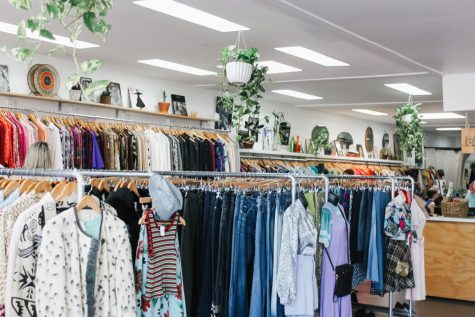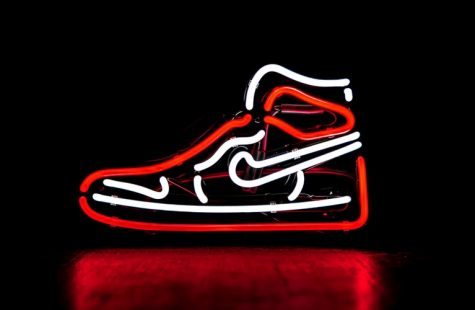The problem with the rising popularity of thrifting
How thrift shopping in poorer communities can lead to gentrification

Over the past few years, the popularity of thrift stores has increased more than ever: with people all over the country looking for cheap deals, unique clothing pieces, and a more eco-friendly way of consuming clothes.
While finding a high-end dress in a thrift shop may be exciting for some — for others — it is a relief off their shoulders. For years, thrifting has served as a symbol of poor status: for many low-income families, thrifted or used clothing may be all they can afford. Yet, this recent rise in thrifting has altered the demographic of consumers, now with many more people in higher classes wanting to find inexpensive yet trendy pieces.
There are numerous benefits to thrifting, especially with the prevalent issue of fast fashion. Thrifting offers a way in which consumers are still able to buy cheap clothing, yet not have to be supporting sweatshops or other unethical means of production. Rather than old pieces being thrown out, thrift shops offer ways in which used clothing can be repurposed with new owners.
While thrifting may generally seem beneficial, this changes when the primary demographic of buyers are individuals who could comfortably afford clothing at other stores. This can lead to a sense of moral superiority: wealthy people exploiting economically unstable areas solely in order to pay less money for clothing. Many people tend to forget that clothing is a necessity as well: in poorer communities, thrift shops are one of the sole ways in which people are able to purchase a basic human need. People don’t always get to look for clothing in thrift stores out of commodity — rather — it is a task that is necessary for their survival.
With the rising popularity of thrifting, prices in these stores have begun to rise as well, marganizling communities that need these resources the most. In fact, there is an average price increase of over 15% within thrift stores in the United States within the past three years. However, not only are prices rising, but desirable clothes are being taken away as well. As thrift stores become more popular, the less high-quality clothes there are available for others to purchase.
Thrift stores such as Goodwill, even with increased prices, have tried to seek ways in order to still give back to their communities. According to Goodwill’s mission statement, “we turn the value of used goods into job training and placement services for people right here in our community. The sales of donations at our store’s fund programs that help put our friends and neighbors back on the path to employment success.”
Another problem resides in the reselling of clothes, especially with the use of popular apps such as Depop. Someone can discover a vintage or trendy piece in a thrift shop for only a few dollars, yet resell it for double or even triple that price. While they are technically selling secondhand clothing, it is stealing from low-income neighborhoods – yet upcharging prices into something most people in that community would be unable to afford. Many people go into thrift shops in poorer areas solely with the intent to acquire cheap pieces and heavily upcharge the price.
So, is thrift shopping ethical? There is no explicit answer to that question. While most people don’t go into thrifting with malicious intentions, it can lead to more detrimental results than initially realized. The prices within thrift stores are only predicted to increase within years to advance – limiting accessibility to poorer individuals. There is no definite solution to these issues either, except trying to limit the amount of thrifting a single person does. Before going thrifting, is it critical to recognize what kind of community the store is located in, and the potential consequences that shopping there has.







